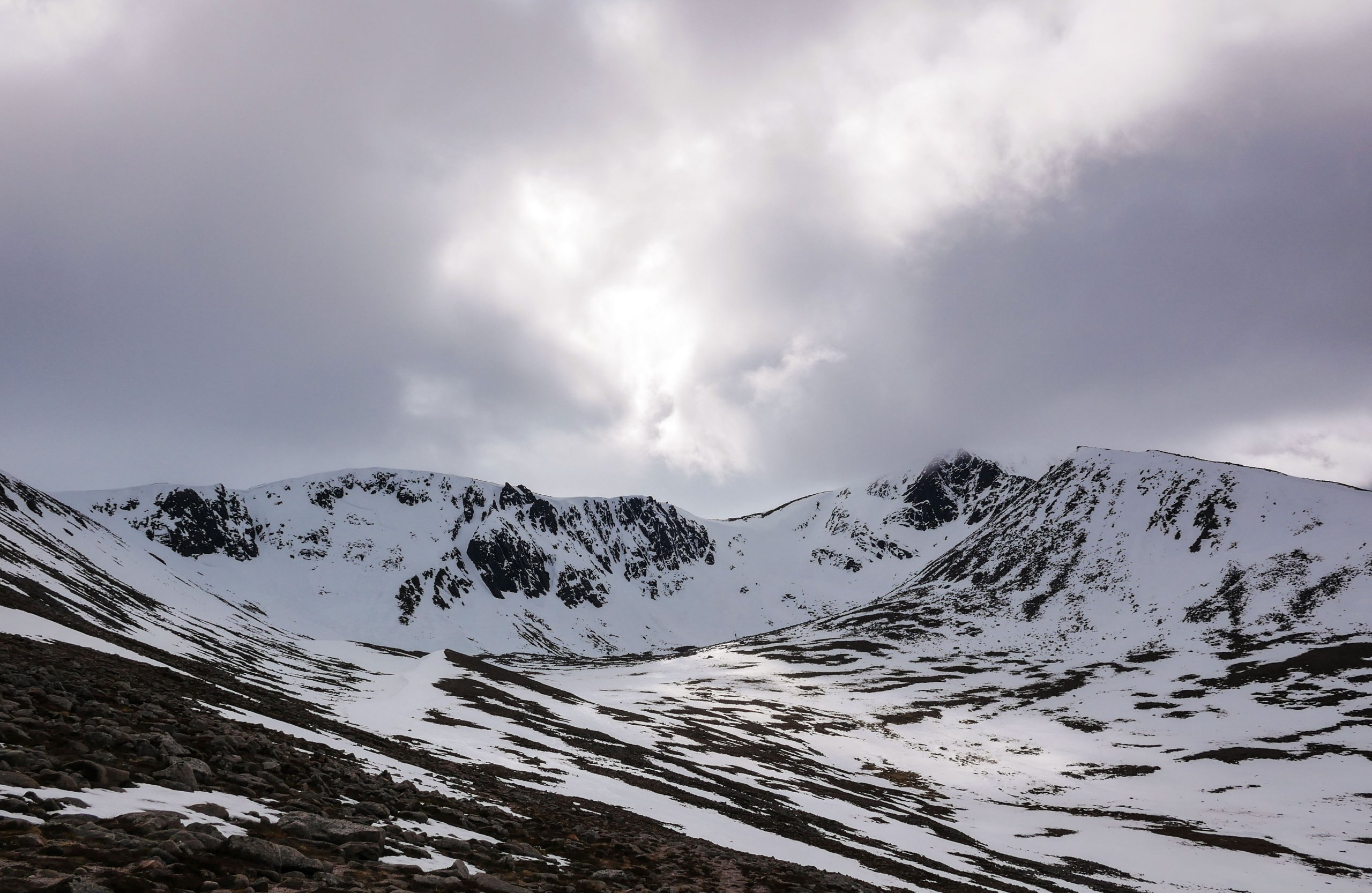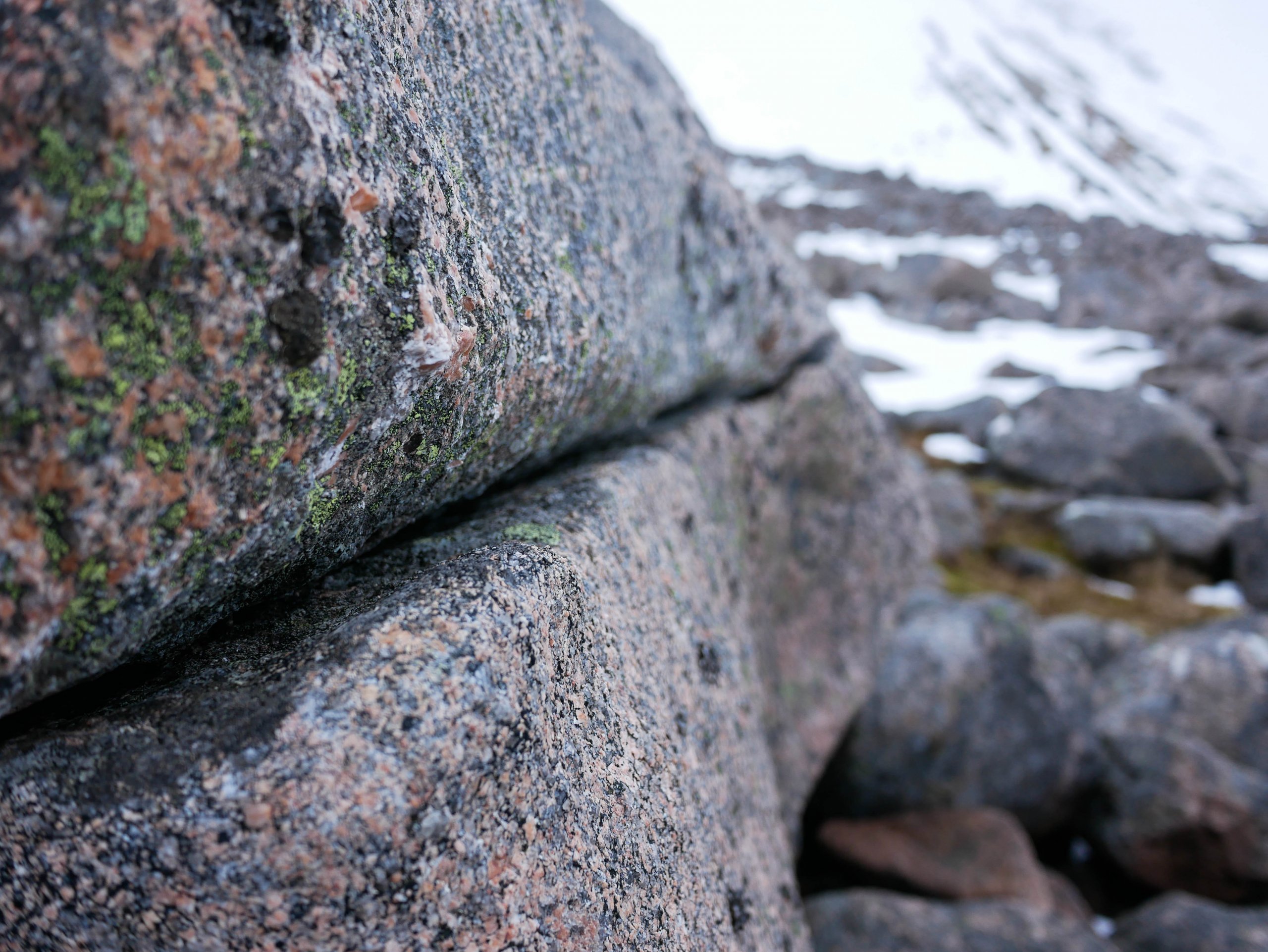Spring Snowpack
18th March 2021

Looking towards Alladin’s Buttress, with avalanche debris still visible in the bottom left from a large avalanche earlier in the season. The crown wall is still visible under the crags (top left). Interesting observation from another SAIS Forecaster in the Southern Cairngorms who suggested that many of the larger avalanches this season have occurred on steep slopes well below the corniced corrie rims. That is certainly the case here in Coire an t-Sneachda, Coire an Lochain, and in Garbh Coire Mor beneath Sgor an Lochain Uaine (The Angel’s Peak).

The view into Coire an t-Sneachda. Left to Right: Mess of Pottage, Alladin’s Buttress, Fiacaill Buttress and Fiacaill Ridge. There are still large and drooping cornices above Jacob’s Ladder and Alladin’s Couloir.

Granite (fissure) in Coire an t-Sneachda. Porphyritic in nature this example, due to the visible feldspar phenocrysts.

Cairngorm Granite, formed in the Cairngorm Pluton 419-444 million years ago in the Silurian Period. [As a Forecaster it always strikes me that there is a certain similarity between the cooling of igneous rocks and the behaviour of snow on the ground… Although to be fair this may not be a widely held opinion!].
Comments on this post
Got something to say? Leave a comment




Lenny Cowieson
18th March 2021 7:06 pm
An interesting comment re cooling rates of granites, it is believed that some of these granites crystallised at depths of up to 15 km below the existing land surface, with slow cooling formation of large crystals ensuing.
ncairngormsadmin
19th March 2021 9:23 am
Thanks Lenny, I hadn’t heard of 15km before but I do remember there were different theories as to the depth of the pluton. As I understand it the slow cooling at depth is what creates the porphyritic texture with the larger crystals (phenocrysts) cooling first. I think of this as being similar to the kinetic growth of facets in the snowpack. These are very different processes, and they are purely linked my my romantic notions! Interesting stuff though.
Lenny Cowieson
20th March 2021 10:20 pm
Absolutely spot on with slow cooling giving rise to larger phenocrysts, I can see the analogy with kinetic development of persisting weaknesses at depth in snowpack